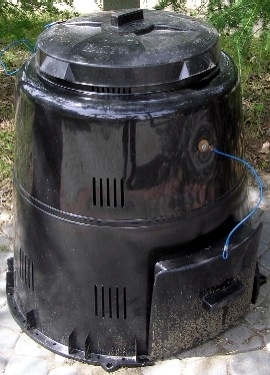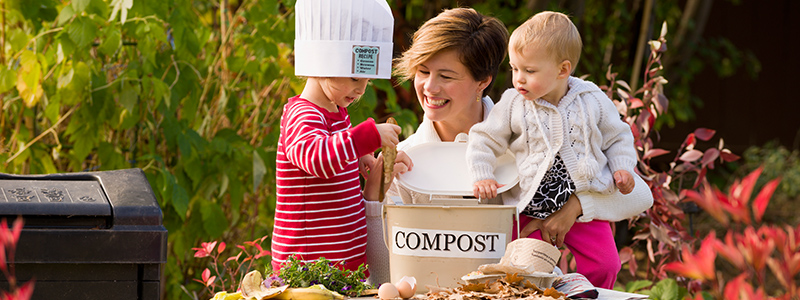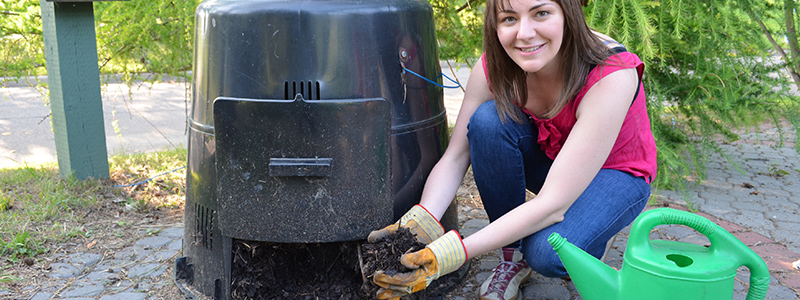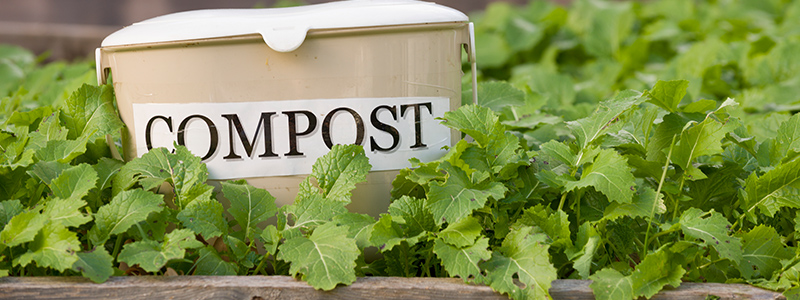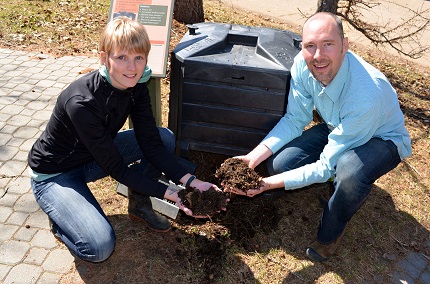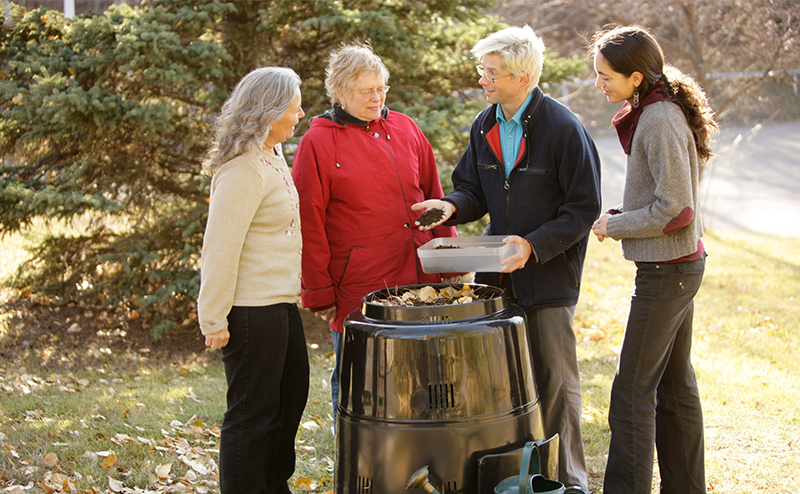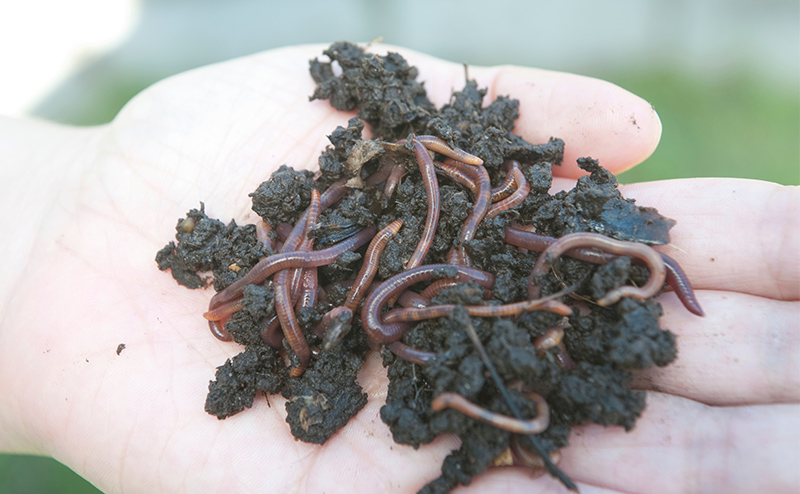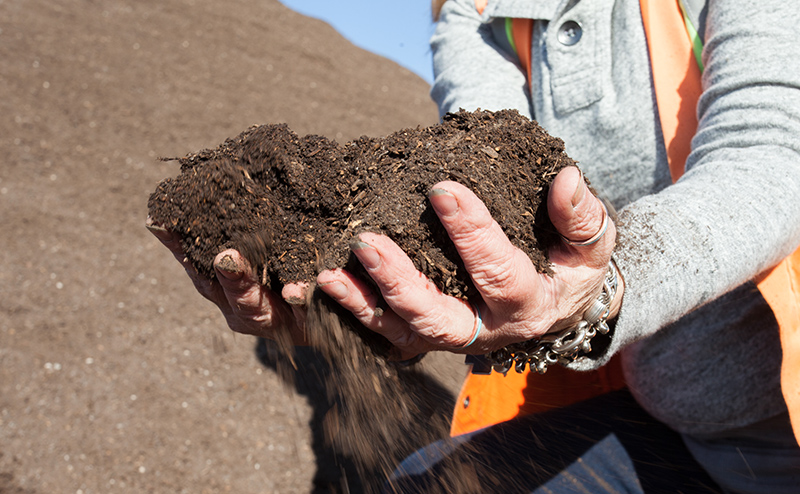You'll Need:
- Kitchen collection pail
- Compost bin
- Convenient spot
- Fluffing tool
- Easy source of water
- Put the bin in a convenient spot.
- Fill the bin one-third full of Browns.
Browns: Autumn leaves, shredded paper, paper towels and napkins, lawn rakings, etcetera - Collect fresh kitchen scraps – these are the Greens.
Greens: Fruit and veggie bits, coffee and tea waste, mouldy leftovers, juice, hair, etcetera - Find a collection pail. Most folks keep a pail under their sink or a pretty container on the countertop, but others collect in their freezer. Line it with paper.
Once a week:
Aerate: Fluff the pile to keep it smelling fresh.
Add: Bury your Greens in the Browns. If the Greens are all in one lump, make sure to break it up. Mix the kitchen scraps down into the Browns and make sure they’re covered. Rinse your container and dump the water on the pile.
Keep it Moist: As wet as a wrung-out sponge. Dry piles stop working. Too much water may cause odours. To correct this, aerate.
Heat is good: Composting creates heat. It's not essential but it helps.
After a few months you can take finished compost from the bottom of the bin.
